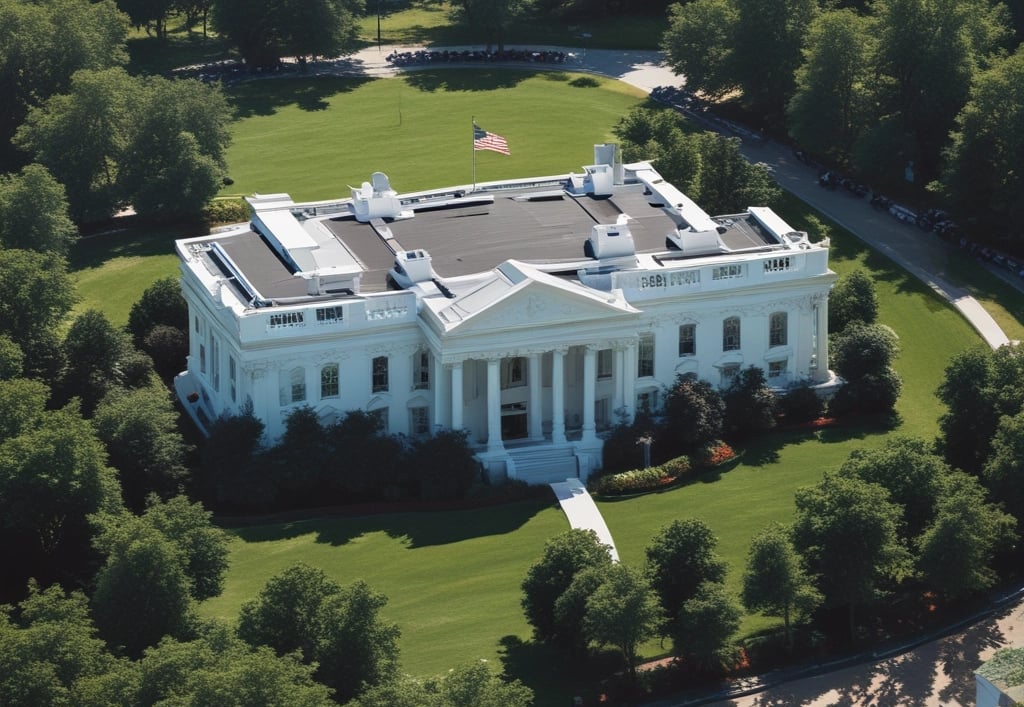Will Trump Ever Provide UAP Disclosure? Or Was It Just Idle Promises?
The topic of Unidentified Aerial Phenomena (UAP) has gained significant interest in the United States, particularly during the tenure of former President Donald Trump. Historically, UAP disclosures have been a contentious subject, shrouded in secrecy and speculation. Previous administrations have approached UAP disclosure with varying degrees of openness, often reflecting the prevailing political climate and public sentiment. For instance, concerns about national security and the potential for widespread panic have frequently led to the classification of UAP-related information.
UAP/UFO/USO
Nigel John Farmer
5/6/20254 min read


The Background of UAP Disclosure Promises
During Trump's presidency, he made several promises related to UAP transparency. In December 2017, the establishment of the Advanced Aerospace Threat Identification Program (AATIP) under the Defense Department marked a pivotal shift in how UAPs were perceived by the government. This program aimed to investigate reports of aerial phenomena, yet it remained under the radar for most citizens. However, Trump's casual remarks, particularly in interviews where he acknowledged encountering the subject of UFOs (the earlier nomenclature), stirred public curiosity and excitement, leading many to believe that disclosure of UAPs was imminent.
The public reaction to these promises was mixed, with some expressing optimism while others were skeptical about the sincerity behind the statements. Critics pointed out that although the administration seemed to be taking a more transparent approach, actual data and reports remained elusive. This sparked debates on whether Trump's proclamations were merely political tactics to gain favor or indicate a genuine desire for UAP transparency.
In view of previous administrations, Trump's approach significantly diverged by bringing the conversation of UAPs into mainstream discourse, albeit without substantive evidence or disclosures. The culmination of these historical context events raises questions about the depth of commitment to UAP disclosures and whether the promises made during his administration will result in meaningful revelations in the future.
Key Moments and Statements from Trump on UAPs
During his presidency, Donald Trump made several notable statements and remarks regarding Unidentified Aerial Phenomena (UAPs) that stirred considerable public interest and speculation about potential disclosure. One of the most significant moments occurred during a 2020 interview with ABC News, where Trump addressed the topic of UAPs directly. He acknowledged the existence of videos showing unusual flying objects captured by the Navy, stating, “I’m not a believer in UFOs, but I’ll tell you that the Navy has seen some things that are beyond anything they can understand.” This statement positioned Trump as a leader open to discussing UAPs, thereby contributing to heightened expectations among the public regarding government transparency on the matter.
Furthermore, Trump’s social media presence also played a pivotal role in shaping the discourse around UAPs. He often utilized platforms like Twitter to share thoughts that resonated with his supporters, and in one particular tweet, he expressed a keen interest in understanding UAPs better, which further fueled discussions within both the public and scientific communities. His casual approach to UAPs suggested a level of interest that some interpreted as an inclination toward potential disclosure.
In press briefings and interviews, Trump repeatedly mentioned the existence of military pilots who had witnessed UAPs during their missions. He noted that the government was exploring these incidents, suggesting a degree of seriousness in addressing the phenomena. While some observers affirmed that these statements indicated a genuine intention toward enlightening the public about UAPs, others critiqued his remarks as superficial political rhetoric aimed at populism. Overall, Trump's statements on UAPs left a complex legacy marked by both curiosity and skepticism regarding the possibility of genuine disclosure during his administration.
Public Reaction and Expert Opinions
The promises made by former President Trump regarding UAP (Unidentified Aerial Phenomena) disclosures have stirred significant debate among both the general public and experts alike. There is a palpable divide between enthusiasm for the prospect of transparency and skepticism regarding governmental secrecy. Many individuals within the UFO community have expressed hope that Trump's administration would lift the veil on UAP investigations, fueled by an increasing number of reports and videos released by the military. This culmination of materials, showcased during his presidency, created a buzz that reinforced the desire for more profound revelations. However, a considerable segment of the populace remains doubtful, viewing these promises as mere political rhetoric rather than foundations for real change.
Public sentiment leans towards cautious optimism. A survey conducted after government reports on UAPs indicated a growing interest in the exploration of extraterrestrial life and accountability about military engagements. Yet, skepticism remains strong, especially among those who have followed decades of government silence on such matters. Critics posit that while Trump's promises were initially captivating, they rarely translated into substantive action. They argue that this lack of follow-through is emblematic of a broader pattern of governmental secrecy that transcends individual administrations.
Experts in ufology and political science have weighed in on this issue as well. Some ufologists argue that previous assertions of UAPs should lead to a collective demand for greater transparency, suggesting that the public should not become disillusioned by unfulfilled promises. Conversely, political scientists emphasize that while disclosure can benefit public understanding, it must be tempered with an awareness of national security considerations. The confluence of hope and skepticism reveals an ongoing tension in the public discourse surrounding UAP transparency that will likely persist. As calls for disclosures continue, experts warn that a balanced dialogue needs to be maintained to navigate the intricate relationship between governmental accountability and secrecy.
The Future of UAP Disclosure Under Trump and Beyond
The question of whether Donald Trump will provide UAP disclosure continues to resonate as government programs evolve. The landscape of unidentified aerial phenomena (UAP) is rapidly changing, partly due to increased public interest and pressure from advocacy groups. Trump's tenure, marked by a turbulent relationship with the media and skepticism towards traditional narratives, brought both attention and contention to the subject of UAP. As we look ahead, it is essential to consider the possible scenarios regarding UAP disclosures under Trump and future administrations.
One potential outcome is the establishment of ongoing investigations that would provide a platform for systematic UAP reporting. If Trump encourages bipartisan support for UAP transparency, his administration could lay the groundwork for strict protocols on how to handle evidence and engage with scientific communities. Moreover, agencies like the Pentagon may feel a renewed pressure to declassify certain files that could widen public understanding of UAP, contributing to a narrative that favors openness over secrecy.
However, the future of UAP disclosure is also contingent on broader governmental attitudes toward transparency. For instance, if future administrations prioritize national security over public knowledge, it may result in the suppression of vital information. Conversely, if lawmakers recognize the importance of investigating UAP without stigma, reforming how data is reported could enhance the prospects for transparency. Ultimately, the dialogue surrounding UAP will remain dependent on societal and political factors, including public sentiment and advocacy efforts.
In conclusion, while there are indications that advancements in UAP disclosure may be on the horizon, many uncertainties remain. Predicting the trajectory of UAP-related initiatives will require careful consideration of the implications of political choices. As we navigate the complexities of this topic, it is essential to maintain a dialogue that encourages openness and accountability in the ongoing quest for understanding unidentified aerial phenomena.
Nigel John Farmer

© 2023 ~ 2024~2025 MeditatingAstronaut.com -
All Rights Reserved Worldwide
website by Meditating Astronaut Publishing
